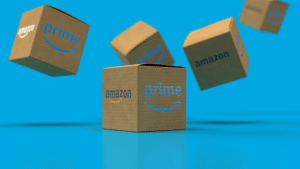A Beginner’s Guide to Selling Wholesale on Amazon
Are you considering selling wholesale on Amazon?
Amazon is the world’s largest online marketplace, providing a vast customer base and powerful tools to Amazon sellers. Hence, selling wholesale on Amazon is an excellent choice for a wholesale business.
This beginner-friendly guide will show you how to start selling wholesale on Amazon. We will also discuss the benefits of the Amazon wholesale business and the Amazon wholesale products research tools.
What is Wholesale Selling on Amazon?
The Amazon wholesale business involves purchasing products in bulk from manufacturers or authorized distributors and reselling them on Amazon. As a wholesale seller, you aim to buy low and sell high like any other retailer.
Getting Started With Selling Wholesale on Amazon
Follow the guidelines below to begin your Amazon wholesale business:
Market research.
You can begin by looking over which products have a demand on Amazon. Tools like Amazon’s Best Sellers, Google Trends, or third-party research tools can help you identify profitable niches.
Legal requirements.
Register your business and meet all legal requirements, including tax obligations and permits. Consult with a legal professional if needed.
Source products.
Endeavor to find reputable suppliers and distributors. You can attend trade shows, browse online directories, or contact manufacturers directly. However, it would be best to verify your suppliers’ authenticity to avoid counterfeit or low-quality products.
Create an Amazon seller account.
Sign up for an Amazon seller account and select an individual or professional account based on your sales volume and business model.
Product listings and pricing strategy.
Create compelling product listings with high-quality images and detailed descriptions. Use relevant keywords to optimize your listings for search engines. You should also set competitive wholesale prices when considering your costs, Amazon fees, and desired profit margins.
Inventory management.
Monitor your inventory status to stay in stock and avoid long-term storage fees.
Shipping and fulfillment.
Source: Pixabay
Decide whether to fulfill orders yourself or use Amazon’s FBA service. FBA can save time and provide access to Amazon Prime customers.
Customer service and marketing.
Provide excellent customer service to build a positive seller reputation. Respond to inquiries promptly and handle returns efficiently. Additionally, use an Amazon advertising agency and external marketing channels to promote your branded products.
How to Create an Amazon Wholesale Selling Account
Follow the steps below to create your Amazon wholesale seller account:
Step 1: Prepare your wholesale selling business.
Ensure your business is ready before starting the Amazon business account creation process. You should have the following:
- A registered business entity, such as an LLC or corporation.
- A valid business address.
- A dedicated bank account for your business.
- Business License.
- Your tax identification number (EIN or VAT ID).
- Information about the products you plan to sell.
Step 2: Visit Amazon Seller Central.
Go to Amazon Seller Central, the platform for creating and managing your Amazon seller account. You can find it by searching for “Amazon Seller Central” in your preferred search engine or by typing the URL directly: https://sellercentral.amazon.com/
Step 3: Sign up and choose your seller plan.
Click the “Start Selling’ icon to begin the account creation process. You can use the details on your customer account if you have one or create a new account.
Amazon offers two seller plans: individual and professional. The individual plan suits small-scale sellers, while the professional plan suits larger business models. Select the one that best matches your business needs. Note that there are fees associated with each plan.
Step 4: Enter business information and complete verification.
You’ll have to provide information about your business, including your legal business name, address, and tax identification number. Ensure you enter accurate information.
Additionally, Amazon may need additional verification to ensure your business’s legitimacy. This extra verification may include providing business documents or verifying your bank account. Follow the instructions provided to complete this step.
Step 5: Set up payment information and create product listings.
You need to provide your bank account information to receive payments from Amazon. Amazon will deposit your sales proceeds into your bank account. After creating your account, you can start creating product listings. These listings will offer detailed information about the products you want to sell, including product titles, descriptions, prices, and images.
Step 6: Consider fulfillment options.
Decide whether to fulfill orders yourself (FBM) or use Amazon’s fulfillment centers (FBA). FBA can simplify shipping and customer service but comes with associated fees.
Read more: Amazon FBA vs. FBM.
Step 7: Start selling.
With your Amazon wholesale suppliers account ready, you can start listing your products. Monitor your seller dashboard for sales and performance metrics.
The Differences Between Selling Wholesale on Amazon and Other Business Models
Let’s dive into how Amazon’s wholesale business distinguishes itself from other common business models on the platform:
- Target audience: When you sell wholesale products on Amazon, you target businesses and Amazon sellers looking to make bulk purchases. However, private label and retail arbitrage business models are quite different. These business models can target businesses and individual consumers, focusing on creating unique products or finding deals to resell.
- Sourcing products: As a wholesale seller, you can buy products in bulk from manufacturers or authorized distributors. However, private label and retail arbitrage models involve creating custom-branded products or sourcing products from various retail sources.
- Inventory management: Selling wholesale products on Amazon requires efficient management of inventory levels to ensure consistent supply for buyers. However, private label and retail arbitrage models may have more flexibility in managing inventory since they can control production or sourcing.
- Branding and marketing: Wholesale sellers on Amazon typically rely on established brands, so they don’t need a unique brand identity. However, the private label model involves creating and marketing your brand, which requires additional efforts in branding and promotion.
- Competition: As an Amazon wholesale seller, you will face competition from other Amazon sellers offering similar products. However, private label and retail arbitrage models may have less direct competition if they offer unique products or find untapped market opportunities.
- Pricing strategy: Amazon wholesale product prices are often competitive due to multiple sellers offering similar products. However, private-label Amazon business models have more control over pricing and can set premium prices for unique products.
- Product listings: Selling wholesale products on Amazon involves listing existing products on the platform, focusing on optimization and competitive pricing. However, private-label Amazon business models require creating new product listings and optimizing them for search and conversion.
Pros and Cons of Selling Wholesale on Amazon
You should consider the pros and cons before entering the world of Amazon’s wholesale business model. Below, we will break down the key benefits and challenges of selling wholesale on Amazon:
Pros
- Amazon has a vast and diverse customer base. Hence, selling wholesale on Amazon allows you to reach millions of potential buyers worldwide.
- Amazon has a support system for sellers, including order fulfillment through FBA, customer support, and payment processing. This can save you time and effort.
- Amazon is a trusted and recognizable brand. Shoppers often feel more comfortable purchasing on a platform they know and trust.
- Selling wholesale goods often involves well-known brands, which can require less marketing effort compared to building a brand from scratch.
- By utilizing FBA, you gain access to Amazon’s Prime customers, who tend to spend more.
- Wholesale sellers often negotiate better prices with manufacturers or distributors due to their purchase volume. Hence, they tend to have a competitive edge on pricing.
Cons
- Amazon’s marketplace is highly competitive, and other sellers may offer similar products at lower prices, making it challenging to stand out.
- Amazon charges various fees, including referral fees and storage fees. These costs may adversely affect your profit margin, especially if you sell low-margin products.
- As a wholesale seller, you might have limited control over pricing, especially if the manufacturer sets the minimum advertised price (MAP). The MAP can impact your ability to compete on price.
- Some brands may have strict requirements or restrictions on who can sell their products on Amazon. Getting approval from such brands can be challenging.
- Wholesale sellers need to manage inventory carefully. Overstocking can tie up capital, while understocking can lead to missed sales opportunities.
- Selling wholesales may not allow you to build your brand identity, as you often resell established products with existing branding.
Amazon Wholesale Product Research Tools

Source: Pixabay
It would be best to have reliable tools to find the most profitable wholesale products to sell on Amazon. These tools will provide insights into market demand, competition, and pricing. Below are some Amazon Wholesale product research tools and how they can benefit your e-commerce business:
- Amazon Best Sellers: Amazon offers a valuable tool called “Amazon Best Sellers.” This tool provides real-time data on products performing exceptionally well on the platform. It is a great way to discover trending and popular items suitable for your Amazon wholesale business.
- Jungle Scout: Jungle Scout is a powerful third-party tool offering Amazon product research features. Wholesale sellers can analyze products, sales history, and estimated monthly sales. With Jungle Scout, you can find profitable niches and make data-driven decisions about which products to source and sell.
- Helium 10: Helium 10 is another robust Amazon research product tool with various features. It can help you find high-demand products, assess competition, and optimize your product listings. Helium 10’s “Black Box” tool lets you search for products based on specific criteria, such as sales rank and estimated monthly revenue.
- AMZScout: AMZScout offers a user-friendly Amazon product research tool that helps you identify profitable products quickly. It provides data on sales estimates, competitor analysis, and historical pricing trends. In addition, it offers a convenient Chrome extension for on-the-fly research while browsing Amazon.
- CamelCamelCamel: CamelCamelCamel focuses on tracking the price and sales history of products on Amazon. By analyzing historical data, you can spot trends, assess product price fluctuations, and make informed decisions about when to buy and sell.
- Keepa: Keepa is another excellent tool for tracking price and sales history. It offers a browser that displays pricing graphs and historical data directly on Amazon product pages. Keepa can help you decide if a product has consistent demand or if it is a seasonal item.
- Sellics: Sellics provides an all-in-one solution for Amazon sellers, including product research tools. It offers insights into keyword rankings, competition analysis, and profitability estimations. Sellics also allows you to monitor your products’ performance and adjust your strategies accordingly.
- Viral Launch: Viral Launch offers a product research tool to help you find profitable products by analyzing Amazon’s vast marketplace data. Features like market trends and competitor tracking simplify identifying products with growth potential.
Conclusion
Selling wholesale on Amazon can be lucrative but requires dedication, research, and a solid strategy. By studying the information in this guide, you can build a successful wholesale business on Amazon. Remember that success may take time, so stay patient and keep learning to grow your business steadily.
Frequently Asked Questions
What is wholesale selling on Amazon?
Wholesale selling on Amazon involves purchasing products in bulk from manufacturers or authorized distributors and reselling them on Amazon’s platform. It is a business model where you buy low and sell high to make a profit.
How do I find suppliers for wholesale selling on Amazon?
You can find suppliers through various channels, such as attending trade shows and using online directories. You can also locate suppliers by contacting manufacturers directly or working with authorized distributors.
Do I need a business entity to sell wholesale on Amazon?
Yes, having a registered business entity, such as an LLC or corporation, is generally recommended when selling wholesale on Amazon. It helps with tax compliance and provides legal protection.
